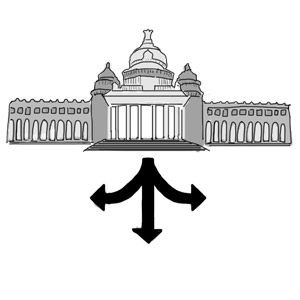Resumen ejecutivo
Water and sanitation is generally part of the public infrastructure, which is one of the greatest financing challenges in developing countries (WINPENNY 2011). Despite the fact that many developing countries face difficulties in financing water and sanitation, the provision of sustainable water and sanitation is still considered to be a responsibility of government. Government contributions can be both financial and non-financial support offered to communities, NGOs or entrepreneurs for improving water and sanitation services.
Introduction
Government contributions include financial and non-financial resources, which are covered by local, regional or central governments to solve water and sanitation problems.
Types of Government Contributions
(Adapted from SIJBESMA et al. 2008)
Government contributions can be of several types:
- Grants and subsidies: By definition, grants are transfers of resources that do not require repayment or compensation. These can take the form of budgetary allocations or subsidies from the central or local government. Recipients can be communities, neighbourhood associations, single households or small-scale entrepreneurs. The grant can be for various purposes, such as setting up a microfinance scheme for sanitation related investments, covering connexion costs, or the implementation of a small-scale sludge service for pit latrines.
- Loans: In contrast to grants, loans have to be repaid to some extent (depending on their specific characteristics). The amount of loan and the interest rate also depend on the decision of the respected government and the type of loan.
- Central government transfers: These are budgetary appropriations that are a common way for governments to finance services out of taxation. These transfers to local government bodies at the intermediate level are designed to serve specific purposes of which sanitation services could be one.
- Local revenue sources for municipalities: Ideally, municipalities in a decentralised setup should be able to get resources from citizens to provide essential services. However, this is normally not the case for municipalities in developing countries. Some mixed schemes which combine central government transfers and local municipality revenues are being used to a limited extent for sanitation.
In order to get support from governmental institutions their requirements must be met. The requirements for getting support depend on the type of contribution. The types of contributions differ from country to country. In addition, the different types of contributions are offered by different levels of governmental institutions such as local, municipal, regional and central governments.
IRC Symposium: Sanitation for the Urban Poor Partnerships and Governance. Financing Sanitation in Poor Urban Areas
Financing for Water and Sanitation. A Primer for Practitioners and Students in Developing Countries
This primer offers a non-technical introduction to financing for water and sanitation in developing countries.
WINPENNY, J. (2011): Financing for Water and Sanitation. A Primer for Practitioners and Students in Developing Countries. EU Initiative Finance Working Group URL [Visita: 21.06.2019]Financing for Water and Sanitation. A Primer for Practitioners and Students in Developing Countries
This primer offers a non-technical introduction to financing for water and sanitation in developing countries.
WINPENNY, J. (2011): Financing for Water and Sanitation. A Primer for Practitioners and Students in Developing Countries. EU Initiative Finance Working Group URL [Visita: 21.06.2019]Smart Finance Solutions. Examples of Innovative Financial Mechanisms for Water and Sanitation
This booklet on Smart Finance Solutions, gives examples of how various existing financial mechanisms and products are being used to finance water and sanitation projects and small local businesses
SINGELING, M. CLAASEN, F CASELLA, D. DAALEN, T. FONSECA, C. (2009): Smart Finance Solutions. Examples of Innovative Financial Mechanisms for Water and Sanitation. Netherlands Water Partnership (NWP) and International Water and Sanitation Centre (IRC) URL [Visita: 21.06.2019]Self-Supply as a Complementary Water Services Delivery Model in Ethiopia
Self-supply, where households invest to develop their own easily-accessible water supplies, is identified as an alternative service delivery model that is potentially complementary to more highly subsidised community-level provision. The approach is widespread in Ethiopia with family wells bringing additional benefits that are in line with wider government objectives, such as supporting small-scale irrigation. However, two recent studies show the current performance of traditional or family wells to be far below potential with most sources providing unsafe water in the absence of adequate protection.
BUTTERWORTH, J. ; SUTTON, S. ; MEKONTA, L. (2013): Self-Supply as a Complementary Water Services Delivery Model in Ethiopia. Entradas: Water Alternatives: Volume 6 , 405-423. URL [Visita: 08.03.2019] PDF
